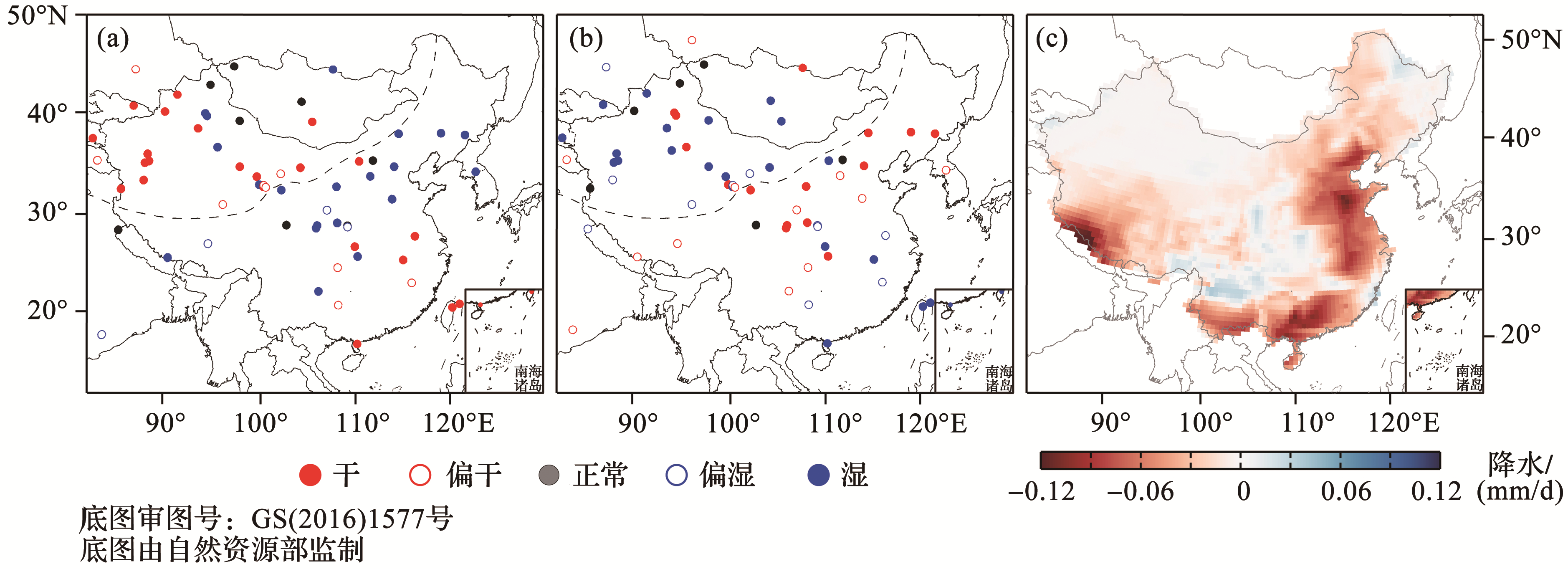过去千年中国年代和百年尺度冷暖阶段的干湿格局变化研究
An Overview on Changes of Dry/Wet Pattern in China in Decadal to Centennial Warm and Cold Periods During the Past Millennium
(a)、(b)中每个点代表一条干湿/降水代用指标序列,每条序列若在统计时段内超过2/3的年份数大于(小于)中值则记为“干(湿)”,超过1/2但小于2/3的年份数大于(小于)中值则记为“偏干(偏湿)”;(c)9个PMIP3模式(BCC-CSM1-1、 CCSM4、 CSIRO-Mk3L-1-2、 FGOALS-s2、 GISS-E2-R-p121、 HadCM3、 IPSL-CM5A-LR、 MPI-ESM-P、 MRI-CGCM3)模拟的LIA期间平均夏季降水距平(以850—1850年的平均状态为基准)的中值分布格局
Each dot in (a) and (b) represents a proxy series for dry-wet/precipitation. A dot is classified as dry (or wet) if the index is greater (or less) than its median in more than 2/3 of the time in a given period, and classified as moderately dry (or moderately wet) if the index is greater (or less) than its median in more than 1/2 but less than 2/3 of the time in a given period; (c) The summer precipitation anomalies during the LIA relative to 850-1850 derived from the median of the nine PMIP3 models (BCC-CSM1-1, CCSM4, CSIRO-Mk3L-1-2, FGOALS-s2, GISS-E2-R-p121, HadCM3, IPSL-CM5A-LR, MPI-ESM-P, MRI-CGCM3)
